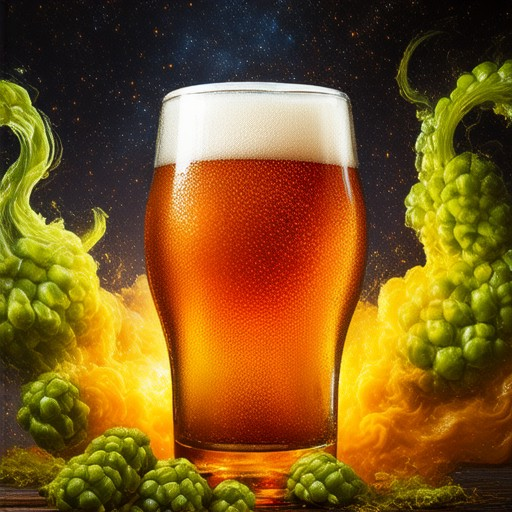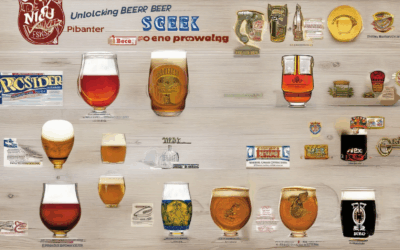Understanding Beer Preferences: Craft Beer Trends and Modern Drinking Habits from Millennials to Gen Z

What is Beer Serving Preference?
Breweries and beer enthusiasts often have specific preferences when it comes to serving beer, influenced by factors like temperature, glassware, and serving techniques. Here’s a detailed guide to understanding beer serving preferences:
Serving Temperature Guidelines
The optimal serving temperature varies depending on the type of beer:
- Ale: 45-50°F (7-10°C)
- Lager: 35-40°F (2-4°C)
- Strong Beer: 50-55°F (10-12°C)
- Wheat Beer: 40-45°F (4-7°C)
- Porter/Stout: 50-55°F (10-12°C)
Glassware Recommendations
Choosing the right glassware enhances the beer-drinking experience:
- IPA: Pub Glass or Tulip Glass
- Lager: Slim Cylinder or Pilsner Glass
- Stout/Porter: Mug or Snifter Glass
- Wheat Beer: Hefeweizen Glass
Serving Techniques
Proper pouring and presentation matter:
- Never fill the glass completely; leave space for head retention.
- Use a gentle pour to avoid excessive foam.
- Serve draught beer at the correct carbonation level, typically around 2-3 inches of head.
Additional Tips
For the best experience:
- Store beer at the recommended temperature until serving.
- Consider the beer’s ABV when deciding the serving temperature.
- Pair beer with food wisely—light beers pair well with light meals, while bold beers complement hearty dishes.
For more detailed insights into beer serving preferences and equipment, visit [CraftBeer.com](https://www.craftbeer.com/) or explore the resources available at [BrewersAssociation.org](https://www.brewersassociation.org/).
Everyone’s Favorite Beer
The preference for beer varies widely among consumers, but several styles consistently rank high in popularity. Here’s a breakdown of some of the most beloved beer types and their appeal:
- India Pale Ale (IPA): Known for its hoppy flavor and crisp bitterness, IPA has gained a massive following globally. Its versatility in pairing with a variety of foods makes it a favorite among casual drinkers and foodies alike.
- Lagers: Light, refreshing, and often sessionable, lagers are a go-to choice for many beer enthusiasts. Brands like Budweiser and Heineken remain popular due to their balanced flavors and widespread availability.
- Stout: Rich, creamy, and robust, stouts appeal to those who enjoy bold flavors. Guinness and Stella Artois are among the most recognized and loved stouts worldwide.
- Craft Beers: With thousands of varieties, craft beers offer something for every taste. Breweries like Sixpoint and New Belgium Brewing Company are celebrated for their innovative styles and commitment to quality.
Beer preferences also depend on regional tastes. For instance, Asahi is a favorite in Japan, while Czech Republic -made beers dominate in Central Europe. In the U.S., Bud Light remains a top choice for many, though craft beers continue to gain ground.
Ultimately, the “favorite” beer is subjective and often tied to personal preferences, cultural background, and availability. Whether you prefer a classic lager or an artisanal IPA, there’s a beer out there for every palate.
For more insights into the world of beer, explore The Goods On Tap , your ultimate guide to discovering the best breweries and beer styles around the globe.

What Are the 3 C’s of Beer?
The 3 C’s of beer pairing are essential principles that guide enthusiasts in creating harmonious and enjoyable experiences. These concepts are fundamental to understanding how beers work with foods.
1. Cut
The “Cut” principle involves pairing beers based on their alcohol by volume (ABV) and body. Lighter beers like lagers or pilsners cut through rich, heavy dishes, acting as a refreshing contrast. Full-bodied stouts or porters, on the other hand, complement hearty meals like steak or chocolate.
2. Complement
“Complement” focuses on matching flavors and aromas between beer and food. For example, a hoppy IPA pairs well with citrusy dishes like ceviche or grilled shrimp due to their complementary flavor profiles. Smoky beers like rauchbier complement smoky meats or barbecue.
3. Contrast
The “Contrast” principle emphasizes balancing flavors. A crisp, tart beer like a Berliner Weisse contrasts beautifully with creamy desserts or spicy dishes. Sweet beers, such as fruit lambics, provide a nice contrast to bitter or savory foods.
By applying these principles, you can elevate your beer tasting experience and explore the diverse world of craft beer. Learn more about beer pairing tips on The Goods On Tap .

The 3:30-300 Rule for Beer
The 3:30-300 rule refers to the optimal serving temperature range for beer, typically between 33°F (0.56°C) and 50°F (10.16°C) . This range ensures that beer is cold enough to enhance its flavor and carbonation without becoming too harsh or flattening the taste.
Key Points:
- Temperature Impact :
- Flavor : Beer’s taste and aroma are more pronounced at cooler temperatures, preventing flavors from becoming muted.
- Carbonation : Proper temperature maintains the fizz and mouthfeel, avoiding a flat or harsh sensation.
- Beer Types :
- Lagers & Pilsners : Best served colder (around 35-38°F) to highlight crispness and hop bitterness.
- Ales : Slightly warmer (40-42°F) to bring out malt flavors.
- Stouts & Porters : Benefits from a slightly higher temp (44-46°F) to showcase roasted and chocolatey notes.
- Glassware :
- Use appropriate glasses like tulip, pint, or snifter to enhance aroma and appearance.
- Storage :
- Keep beer in a cool, dark place to prevent lightstrike. Refrigeration is common but ensure consistent room temp to avoid flavor changes.
- Serving Process :
- Pour gently to avoid introducing air bubbles, affecting foam and texture.
- Personal Preference :
- Taste varies; some prefer colder beers, while others enjoy closer to room temp for a smoother experience.
This rule balances flavor, carbonation, and enjoyment, making it a versatile guideline for serving beer.
What is the 80/20 Rule for Beer?
The 80/20 rule in the beer industry refers to a strategy used to optimize sales and product selection. According to this principle:
- 80% of total supplier sales come from 20% of the supplier’s brands .
- 80% of those same brand sales come from 20% of SKUs (Stock Keeping Units) .
This unequal relationship highlights that a small percentage of products often account for the majority of revenue. Brewers can leverage this insight to focus their efforts on high-performing brands and SKUs, streamlining inventory management, and maximizing profitability.
For example, a brewer might allocate resources to their top-selling brands while discontinuing underperforming ones. Similarly, within each brand, prioritizing popular SKUs can reduce costs associated with excess inventory and less profitable products.
This approach allows brewers to make data-driven decisions, improve operational efficiency, and better align their offerings with consumer preferences.
Key Competitors in the Beer Industry:
- Anheuser-Busch InBev
- Heineken
- MillerCoors
By applying the 80/20 rule, brewers can better understand their market position and optimize their product portfolio for sustained success.

The 6 Beer Rule Explained
In certain popular destinations like Majorca and Ibiza in Spain, all-inclusive resorts have implemented a regulation known as the “Six Drink Rule.” This rule limits guests to a maximum of six alcoholic beverages per day, distributed evenly between lunch and dinner.
- Daily Alcohol Limit: 6 alcoholic drinks per guest per day
- Timing: Typically, 3 drinks at lunch and 3 at dinner
- Purpose: To manage alcohol consumption and promote responsible tourism
This rule aims to prevent excessive drinking and associated issues while still allowing guests to enjoy beverages responsibly. It reflects an effort by local authorities and resort operators to balance visitor experiences with public health considerations.
For travelers visiting these destinations, it’s essential to understand and respect the guidelines to fully enjoy the amenities offered while adhering to local regulations.





0 Comments